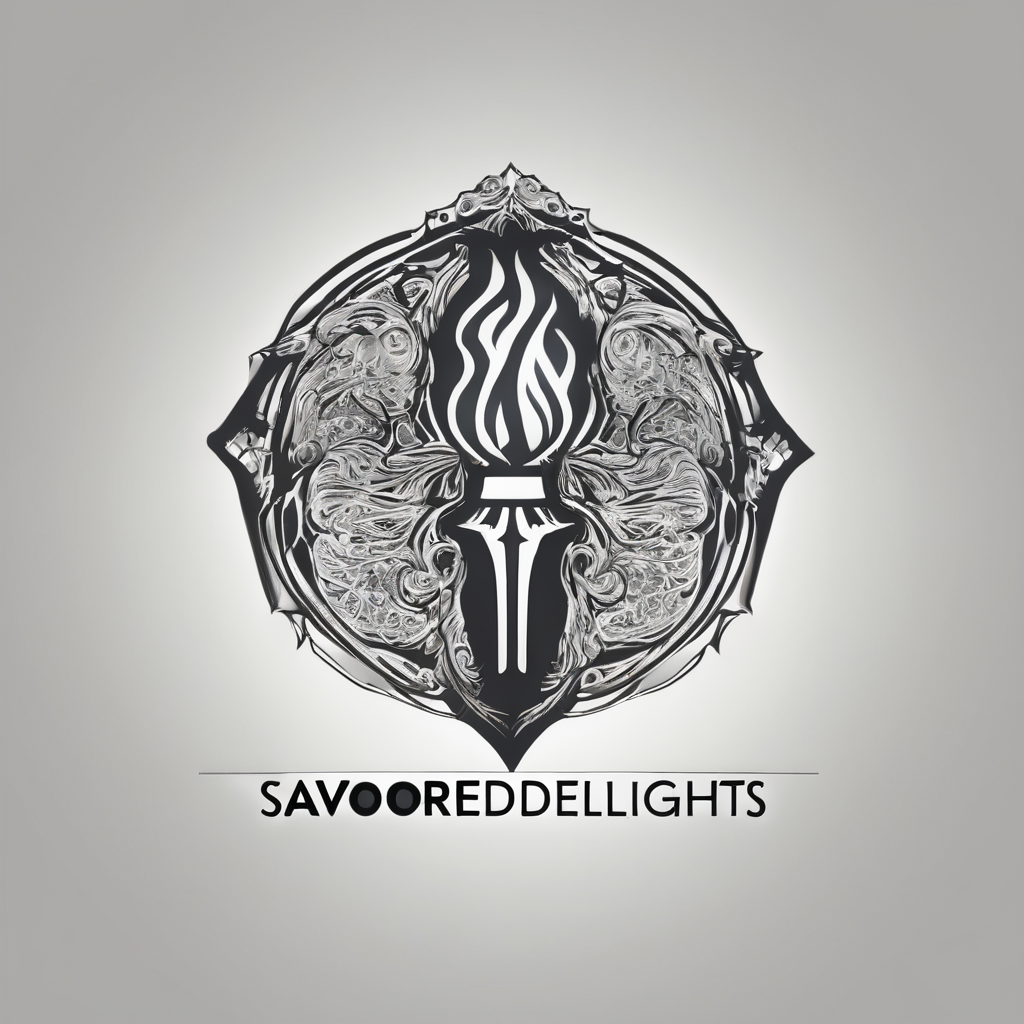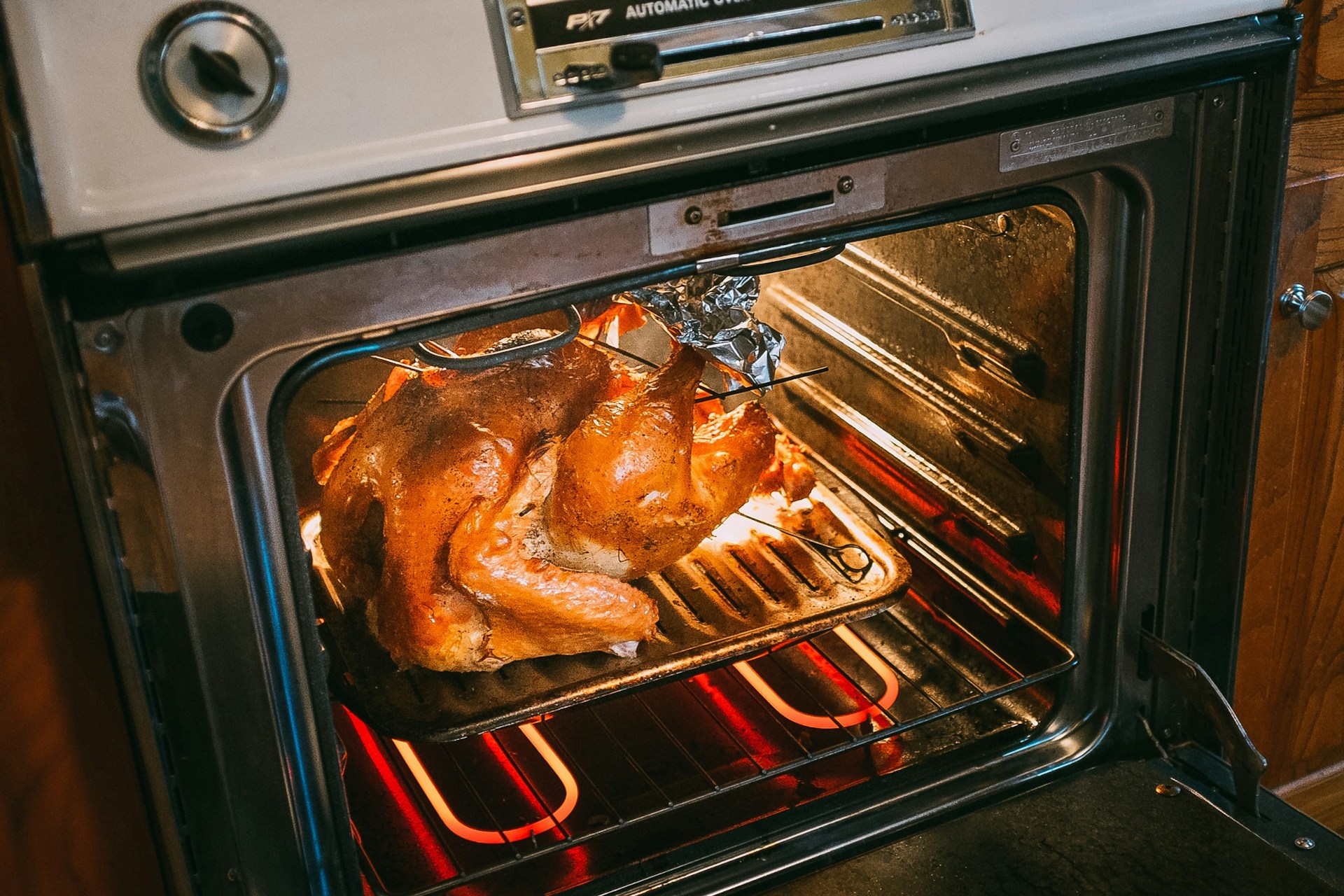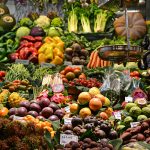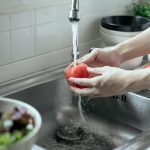Selecting the Perfect Roasting Rack: Tips for Perfectly Even Cooking and Hassle-Free Cleanup
When it comes to cooking a perfect roast, whether it's a succulent turkey, a tender beef, or a crisp vegetable medley, the right roasting pan and rack are essential tools in your kitchen arsenal. Here’s a comprehensive guide to help you choose the best roasting pan and rack, ensuring even cooking and making cleanup a breeze.
Understanding the Importance of a Roasting Pan and Rack
A roasting pan and its accompanying rack are more than just kitchen utensils; they are the foundation of a perfectly cooked meal. Here’s why they matter:
In parallel : Top Cutting-Edge Features to Seek in Your Next Smart Refrigerator
Key Features of Roasting Pans
Roasting pans are designed to handle large cuts of meat, poultry, and vegetables, and they typically feature tall, straight sides to minimize splatter and accommodate various food sizes.
-
Materials: High-quality roasting pans are often made from durable materials like hard-anodized aluminum, stainless steel, or cast iron. These materials provide excellent heat distribution and retention. For instance, tri-ply stainless steel pans with an aluminum core offer superior heat conductivity and distribution, eliminating hot spots that can lead to uneven cooking.
Topic to read : Top Cutting-Edge Features to Seek in Your Next Smart Refrigerator
-
Versatility: Many roasting pans come with multi-functionality, such as lids that double as separate cooking surfaces. This design enhances cooking options and provides excellent value for home cooks seeking multifunctional kitchen tools.
The Role of a Roasting Rack
A roasting rack is not just an accessory; it is a crucial component that promotes even cooking.
-
Elevation: The rack elevates the food, allowing hot air to circulate underneath and fats to drip away. This ensures that the food cooks evenly and prevents it from steaming instead of roasting.
-
Ease of Use: A good roasting rack should be easy to maneuver, especially when hot. Look for racks with sturdy, riveted handles that provide a solid grip, making it safer to handle the pan during and after cooking.
Choosing the Right Material for Your Roasting Pan
The material of your roasting pan can significantly impact the cooking experience and the ease of cleanup.
Stainless Steel
Stainless steel is a popular choice for roasting pans due to its durability and excellent heat transfer properties.
-
Pros: Stainless steel pans are non-reactive, meaning they won’t impart any flavors to your food. They are also easy to clean and maintain, and many are dishwasher safe. For example, the Cuisinart MultiClad Pro Roasting Pan features a tri-ply stainless steel construction that ensures even heat distribution and is safe for use on various stovetops, including induction.
-
Cons: While stainless steel pans are generally heavy-duty, they can be heavy, especially when filled with food. However, this weight often translates to better heat retention and distribution.
Non-Stick Coating
Non-stick roasting pans are another option, especially for those who dread the cleanup process.
-
Pros: Non-stick pans, such as the Circulon Non-Stick Family Roasting Oven Tray & Rack, are incredibly easy to clean. The non-stick coating prevents food from sticking, making it a breeze to wipe away any residue. These pans are also often lighter and easier to handle.
-
Cons: Non-stick coatings can be prone to chips and scratches, which may require more frequent replacement. Additionally, they may not withstand high temperatures as well as other materials, and metal utensils should be avoided to prevent damage.
Cast Iron
Cast iron roasting pans are known for their excellent heat retention and distribution.
-
Pros: Cast iron pans can achieve a perfect crust on meats and vegetables. They are also very durable and can last for many years with proper care. However, they are typically heavier and may require seasoning to maintain their non-stick properties.
-
Cons: Cast iron pans are often heavier and more challenging to handle, especially when hot. They also require more maintenance than other materials, as they need to be seasoned regularly to prevent rust.
Size and Capacity: What You Need to Know
Choosing the right size of your roasting pan is crucial for ensuring that your food cooks evenly and that you have enough space for all the ingredients.
Standard Sizes
Roasting pans typically come in three standard sizes: 14, 16, and 18 inches.
-
14 Inches: Ideal for smaller roasts, chickens, and vegetables. This size is perfect for those who cook for smaller groups or prefer to roast smaller cuts of meat.
-
16 Inches: The most common size, suitable for most roasting needs. It can accommodate turkeys up to 16 pounds and is versatile enough for various types of roasts and vegetables.
-
18 Inches: Best for large turkeys and bigger roasts. This size is ideal for those who need to cook for larger groups or prefer to roast larger cuts of meat.
Design and Shape Considerations
The design and shape of your roasting pan can affect both the cooking process and the ease of handling.
Rectangular vs. Oval
-
Rectangular: Most common shape, easy to handle on stovetops, and fits well in standard ovens. However, they might not be as easy to maneuver as oval pans when it comes to larger roasts.
-
Oval: Easier to handle for larger roasts, but may not sit evenly on stovetops. Oval pans are great for those who frequently roast whole turkeys or large cuts of meat.
Tall Sides and Low Flared Sides
-
Tall Sides: Useful for containing juices but can hinder browning if too tall. Look for pans with tall sides that are not excessively high to balance juice containment and browning.
-
Low Flared Sides: Ideal for promoting even browning while still containing juices. Pans like the All-Clad roasting pan feature low flared sides that make it easier to achieve a golden-brown crust on the meat.
Tips for Even Cooking
Even cooking is the hallmark of a well-chosen roasting pan and rack. Here are some tips to ensure your meals turn out perfectly:
Heat Distribution
- Uniform Heat: Look for pans made from materials that ensure uniform heat distribution, such as tri-ply stainless steel with an aluminum core. These pans eliminate hot spots, ensuring that your food cooks evenly.
Use of Racks
- Elevate Your Food: Always use a roasting rack to elevate your food. This allows hot air to circulate under the food, promoting even cooking and preventing steaming.
Temperature Control
- Proper Temperature: Ensure you use the right temperature for the type of food you are roasting. Proper temperature control, along with the right cooking time, is crucial for achieving perfectly roasted meats and vegetables.
Cleaning and Maintenance: Making Cleanup Easy
Cleaning your roasting pan and rack can be a daunting task, but with the right techniques, it becomes much easier.
Routine Cleaning
- Hot Water and Dish Soap: For routine cleaning, a combination of hot water and dish soap often suffices. However, for more stubborn residues, you may need more robust methods.
Dealing with Stubborn Residues
-
Baking Soda and Vinegar: Create a paste with baking soda and vinegar to tackle stubborn, baked-on food residues. Sprinkle baking soda over the pan, pour vinegar on top, and let the mixture bubble for a few minutes before scrubbing.
-
Ketchup Method: For particularly challenging stains, consider using ketchup. The high acidity helps break down stubborn residues. Spread ketchup on the pan and let it sit for 10-15 minutes before scrubbing.
Handwashing vs. Dishwasher
- Handwashing: While many roasting pans are dishwasher safe, handwashing is often recommended. It is gentler on the pan's surface and helps preserve its integrity.
Preventing Warping and Maintaining Shape
To ensure your roasting pan lasts long and performs optimally, it’s crucial to prevent warping and maintain its shape.
Avoid Rapid Temperature Changes
- Gradual Heating and Cooling: Avoid rapid temperature changes, which are the primary cause of warping. Gradually heat or cool your pan to minimize thermal shock.
Use Thicker Gauge Pans
- Thicker Gauge: For roasting at high temperatures, consider using thicker gauge pans. Pans with a thickness of at least 2.5 mm are generally more resistant to deformation.
Extending the Lifespan of Your Roasting Pan
Proper care and maintenance can significantly extend the lifespan of your roasting pan.
Cleaning Around Handles and Rivets
- Detailed Cleaning: Pay special attention to cleaning around handles, rivets, and interior seams, where grease and food particles can accumulate. Use a paste made from baking soda and vinegar to clean these areas effectively.
Storage
- Use Pan Protectors: When storing your roasting pan, use pan protectors to prevent scratches and maintain its condition. This ensures that your pan remains in good shape for future use.
Comparative Analysis of Top Roasting Pans
Here’s a comparative analysis of some top-rated roasting pans to help you make an informed decision:
| Roasting Pan | Material | Size | Non-Stick Coating | Dishwasher Safe | Guarantee | Special Features |
|---|---|---|---|---|---|---|
| Cuisinart MultiClad Pro | Tri-ply Stainless Steel | 16 inches | No | Yes | Lifetime | U-shaped roasting rack, stovetop safe, induction compatible |
| Circulon Non-Stick Family | Non-Stick Coated Carbon Steel | 39.4 x 30.7 cm | Yes | Yes (handwashing recommended) | Limited Lifetime | Roasting rack, easy to clean, non-stick coating |
| Scoville Neverstick Roaster | 18/10 Stainless Steel, Aluminum Core | 35.5 x 7.5 x 26 cm | Yes | Yes | 25 years | Non-stick coating, stovetop safe, induction compatible |
| All-Clad Stainless Steel | Tri-ply Stainless Steel | 16 inches | No | Yes | Lifetime | Low flared sides, stainless steel rack, induction compatible |
| Caraway Roasting Pan | Ceramic Coated Stainless Steel | 16 inches | Yes | No | Limited Lifetime | Non-stick ceramic coating, stainless steel rack, multiple colors available |
Practical Insights and Actionable Advice
Here are some practical tips and advice to help you get the most out of your roasting pan and rack:
-
Invest in Quality: While it may be tempting to go for cheaper options, investing in a high-quality roasting pan and rack will pay off in the long run. Look for pans made from durable materials that offer excellent heat distribution and retention.
-
Use the Right Rack: Always use a roasting rack to elevate your food. This ensures even cooking and prevents steaming. The rack should be sturdy and easy to maneuver, even when hot.
-
Clean Immediately: Clean your roasting pan immediately after use to prevent food residues from hardening. For stubborn stains, use baking soda and vinegar or ketchup to make the cleaning process easier.
- Store Properly: Store your roasting pan in a safe, dry place using pan protectors to prevent scratches. This helps maintain the condition of your pan and extends its lifespan.
Quotes from Experts
Here are some quotes from experts that highlight the importance of choosing the right roasting pan and rack:
-
"A great roasting pan is useful for more than just the Thanksgiving turkey. Prepare classic roasts, one-pan meals, and more with these top pans." – The Spruce Eats
-
"The perfect turkey pan should have tall sides to contain those delicious juices, but if they're too tall, they can hinder the browning." – Homes and Gardens
-
"Stainless steel is my material of choice for excellent heat transfer and a smooth transition from oven to stovetop for gravy-making." – Homes and Gardens
Selecting the perfect roasting pan and rack is a crucial step in ensuring that your meals are cooked to perfection. By understanding the key features, materials, and design considerations, you can make an informed decision that suits your cooking needs. Remember to prioritize even heat distribution, easy cleanup, and proper maintenance to get the most out of your roasting pan and rack. Whether you're a seasoned chef or a beginner in the kitchen, the right tools will make all the difference in your cooking journey.






